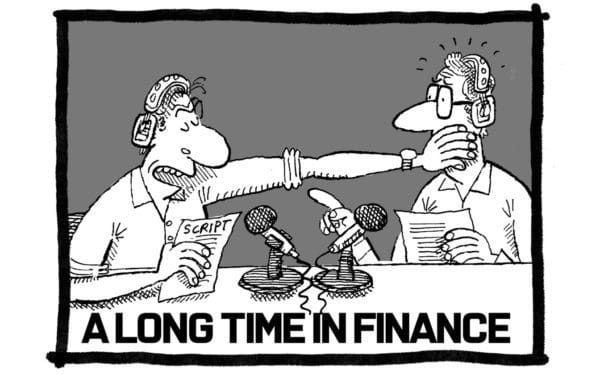A personal view from Ian Stewart, Deloitte’s Chief Economist in the UK.
In their response to the pandemic, Western governments have learned and applied many of the lessons of past crises.
The most recent lessons, from the last six months, have come with a heavy cost. Early testing and tracing at scale gave countries including Germany, Taiwan and South Korea a lead in combating the virus. The West has followed many East Asian economies in adopting lockdowns, social distancing, quarantines and face masks. The first waves of the virus underscored the need to protect care homes and to maintain supplies of personal protective equipment (PPE).
In a pandemic public health determines economic performance. The East Asian countries which were quickest to control the epidemic registered milder downturns than European or North American countries. China, Hong Kong, Singapore and Taiwan’s experience of SARS in 2002–03 prepared them for future epidemics and reinforced the widespread use of face masks.
In the early months of this year comparisons were often made with the 1918–20 flu pandemic. One widely cited lesson from 1918 was that locking down early was vital to controlling the virus. St Louis’ quick response to the 1918 flu, limited activity within 48 hours of the first case, helped half its death rate relative to Philadelphia, which waited two weeks.
There are limits to the comparisons that can be drawn with 1918. Social safety nets were rudimentary or non-existent then, and wholesale workplace closures were not feasible. In the wake of the destruction of the first world war, and the repatriation and demobilisation of huge numbers of troops, governments had to maintain activity and the movement of people.
Rich economies have, historically, proven resilient in the face of external shocks. After Japan’s Kobe earthquake in 1995, the 9/11 terrorist attacks and the SARS epidemic growth bounced back, fuelled by pent-up demand, easy policy and reconstruction.
These shocks were localised, discrete events. Today’s pandemic is global in its reach, and, in the absence of a vaccine, persistent. The impetus to growth from pent-up demand and loose policy will be dampened by continued caution and uncertainty. The global downturn will, as a result, be more severe, and the return to normal slower, than for decades.
Policymakers have clearly absorbed the lesson of the 2008 global financial crisis on the need to act quickly and at scale. Central banks deployed the tools they developed over the course of 2008–09 in a matter of weeks at the onset of the pandemic. This intervention succeeded in avoiding what, at times, came close to a meltdown in some financial markets.
The experience of the global financial crisis has left governments and central banks more willing to adopt radical policies and err against the early withdrawal of support. It is hard to imagine governments borrowing to fund private sector wages, Germany abandoning its balanced budget rule or the EU signing up to shared borrowing without the prior experience of the last recession.
A stronger, better capitalised banking sector is one of the benign legacies of the financial crisis. As a result banks have been able to play a vital role in maintaining private sector liquidity and in channelling government support to corporates.
Economic policy evolves in response to the challenges of the day. The Great Depression and second world war paved the way for the post-war Keynesian policy consensus. The stagnation and inflation of the 1970s created a new economic orthodoxy, around monetarism and neoliberalism, which took hold in the UK and the US in the 1980s. The pandemic, coming after a decade of low growth, is fuelling a search for alternative economic models. Some foresee an era of higher government borrowing and activism designed to boost growth.
COVID-19 has naturally added to concerns about the growth potential of western economies. Yet the economic future is not preordained and things do not always turn out as expected – sometimes in positive ways. After the global financial crisis few expected unemployment rates to fall to near record-lows in Germany, the UK and the US. The UK’s vote to leave the EU in 2016 slowed growth, but less than the more pessimistic forecasts suggested, and unemployment continued to decline. Following the second world war, many feared another Great Depression as millions of demobilised troops struggled to find work. Instead growth boomed. Few could have predicted the economic miracle in post-war western Europe, the Asian Tiger economies and later, in China.
A long history of financial, economic and external shocks has left policymakers with a wide range of tools to combat downturns. Even after the hyperactivism of the last six months governments have scope to increase spending and central banks have monetary policy firepower. Yet increasingly the task is shifting from providing short-term support to activity to aiding structural change and raising trend growth. This is altogether more complex and long term in nature. It requires greater selectivity and harder judgements to be made about the capacity and competence of government.
What marks this crisis out from those of the last 80 years is that Western governments have so far been fiscally unconstrained – they can borrow at negligible cost on a vast scale. The economic and political difficulties of raising taxes or cutting public expenditure suggest that, bond markets permitting, governments are likely to run sizeable deficits well into the recovery.
Economic policy makers have torn up the old rule book in their response to the pandemic. That has helped avoid a far deeper, more damaging economic crisis. The challenge now is to harness the same spirit of urgency and creativity to secure the recovery.

A government takeover of Thames Water would be an outrage
The new government’s hand is strong enough to resist nationalisation, which would stick over £18bn of debt onto the taxpayer.



